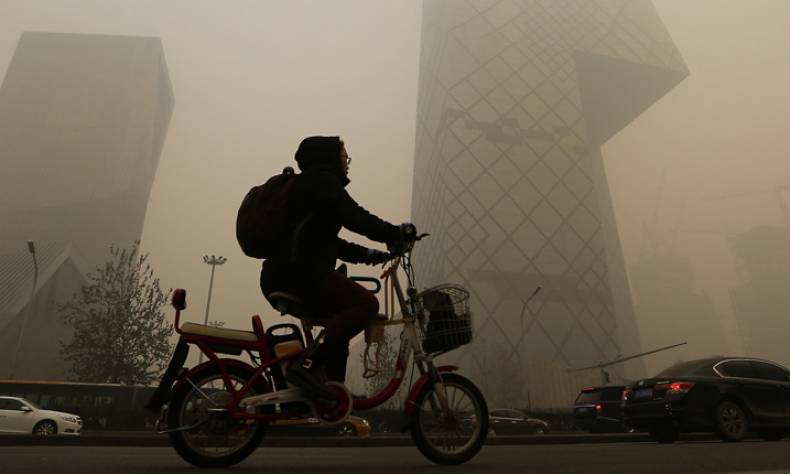
A History of Beijing’s Hazy Shade of Winter
Beijing’s first air pollution red alert marked a historic occasion in the city’s fight against air pollution as. Much of the capital came to a standstill from December 8 to 10, with classes suspended and construction sites shut down. Many citizens yearned for the clear skies so common when foreign dignitaries visit for important events, such as during the now-infamous “APEC blue” and Victory Day parade days.
Understandably, people are inclined to believe that Beijing’s air quality deteriorated with tremendous hast since China’s economic boom that began 35 years ago. It would make sense then that Beijing would’ve had much better air quality in times when vehicles and factories were but figments from the future. Or so one would think.
As an article from the People’s Daily website in March implies, Beijing has witnessed air pollution for centuries, albeit it the form of ‘haze” and not smog. The earliest records of Beijing’s haze dates back to the Yuan Dynasty (1271-1368) where, according to The History of Yuan Dynasty by Yuan scholars Song Lian and Wang Yi, a heavy haze plagued the city in March under the lunar calendar of 1329. The main cause was insufficient rains and an absence of snow.
The Ming Dynasty (1368-1644) saw haze as a more frequent annoyance. In the winter of 1481, a wild wind blew through the Beijing city, covering the city in a dusty haze. Four years later, the haze harassed Beijing again for consecutive days. In addition to the city’s colder months, haze often was a springtime occurrence, and in many cases, the absence or lack of snow could forecast the coming of haze in the spring. In 1497, haze occurred in spring, which, as the history records state, the snowless weather of the preceding winter had anticipated.
Evidently, the haze documented in the ancient Chinese archives mostly occurred alongside periods of drought. But why? In ancient China, disasters such as floods and droughts were required by the government to be documented, and the haze would’ve a side note in these chronicles. It has been noted, however, that a good account of smoke and haze was likely not recorded due to negligence and a lack of awareness.
What can be inferred from these records is that the frequency of haze in the Yuan Dynasty was exceeded by that in Ming Dynasty, provided that the records are reliable. Three reasons can account for this: first, Beijing was not the country’s political and economic center before the Yuan Dynasty, but instead a frontier stronghold considered less important and therefore seldom documented in historic records. In addition, Beijing was not built in a large scale before it became the capital of Yuan Dynasty, therefore, more and more buildings sprang up. Even though they were not high but the crowded buildings could also impede the air flow. Moreover, the Ming Dynasty coincided with the Little Ice Age (1650—1700), when Beijing’s climate got colder and rains lessened, facilitating the formation of haze.
In fact, Beijingers have had to endure haze, smoke, and smog for years (although this does not make it any better). A blogger called “Lao Tan” recollected the old days in Beijing, saying that the capital has implemented measures to combat sand storms for nearly half a century with little success. He said that smoke and haze was also a prominent problem in Beijing during the late 1970s, as many Beijing citizens, in particular those living in the siheyuan (quadrangle) courtyards, used coal stove briquettes to fuel their stoves in winter. “Whenever you went into the streets, you would choke from the air.”
It is indisputable that the smog is only worsening in Beijing, and at an alarming rate that has forced the entire city to consider the issue of the utmost importance. What history can tell us is that the presence and build-up of humans has affected the levels of pollution greatly; the Ming Dynasty saw more infrastructure built but less measures taken to solve the pollution, and the snowball rolled on from there. As the whole world is now keenly watching Beijing’s smoggy situation, the government should really come up with a thorough scheme to remove the pollution instead of making empty promises.
 Facebook
Facebook
 Twitter
Twitter
 Linkedin
Linkedin
 Google +
Google +











So Beijing will be polluted like this for another century and another? Hope pollution will be history.
Is there any chance the pollution can be solved ASAP?
Oh, its not pollution. Its just harmless fog, don’t you know? Good old water vapour.